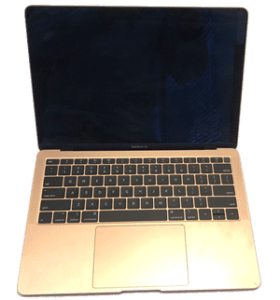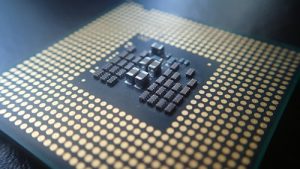While it has been a rumor for years that Apple was developing its own processor, and would ditch Intel processors in favor of its own. Apple recently announced the development of its own ARM-based chips in-house and their plan to ditch Intel completely in the next two years. This was announced at Apple’s WWDC 2020 Special Event Keynote.
While this news might be another bad news in the long line of bad news that Intel has had in the year 2020, what exactly does this mean for the everyday user of the Apple MacBook?
Here are some of the key things to expect from Apple’s Silicon Processor.
- Slimmer Macs with Longer Battery Life: Apple’s chip design prowess has brought them to the point where the current iPhone 11 Pro Max can offer single-core performance that is competitive with the current MacBooks in synthetic benchmarks.
By making their own processor in-house, with all of their own programming, Apple can have greater control over heat dissipation in their computers. Therefore, with the new MacBooks coming out, there is a great chance that they will be slimmer and cooler than any of the old MacBooks ever produced. While delivering greater performance.
- Transition and Compatibility: While MacBook users will enjoy an improved performance in slimmer form factors in the upcoming MacBooks. A major drawback would be transitioning from Intel-based processors to Apple’s in-house silicon. This is because the instruction set of many applications written for Intel would have to be translated to that of Apple’s processor.
However, the good news is that Apple claims that its new translator can translate an application at install time rather than at runtime.
- ARM-based only Applications: By transitioning to their own processor, this means that all of Apple’s applications now would be ARM only. This means, for instance, iPad OS apps can just work on a Mac with no tweaks at all. However, because iOS and iPad OS are based on MacOS, it is basically easy for Apple to unify its ecosystem around its custom ARM architecture. This means that it would be difficult to distinguish between different operating systems in the ecosystem.
The downside to this is that Apple would put a lot of emphasis on installing applications only from the Apple store. While it makes sense to only install apps from the Apple store for Apple devices, this would make it hard for applications with external installation methods to thrive.
- Instant-on: Apple has always had the always-on feature on lock in all of its mobile devices, which allows the devices to be on low-power mode for weeks without needing a recharge. Therefore, with the new ARM processors coming to MacBook computers, the Instant-on feature is likely to come to MacBook too. This would mean that users can leave their MacBook computers for a long period without charge, and pick up right where they left off when they return.
- Wait at least two years for Desktop ARM chip Implementation: Apple’s ARM architecture, when compared to the X86 instruction set of Intel, has a less flexible instruction set. This means that it would take a while for developers to migrate to creating programs that run specifically on ARM processors. For instance, Adobe would have to write new instruction sets for ARM processors and probably have to put all of their applications on the Apple store.
Also, another reason why it would take a while for Apple’s ARM-based processors to be used in desktop computers is because of speed. Apple’s silicon chip would need to match the single-core performance of high-end Intel and AMD CPUs for it to be considered as a viable replacement for these processors. However, as of right now, the ARM processors cannot handle heavy desktop performance outputs like Intel and AMD processors can.
Conclusion
For now, MacBook users would have to keep their fingers crossed as they wait for Apple to start selling MacBook laptops with their processors. Regardless of whether or not Apple fails or succeeds, one this is for sure. The computer industry would never remain the same again.




